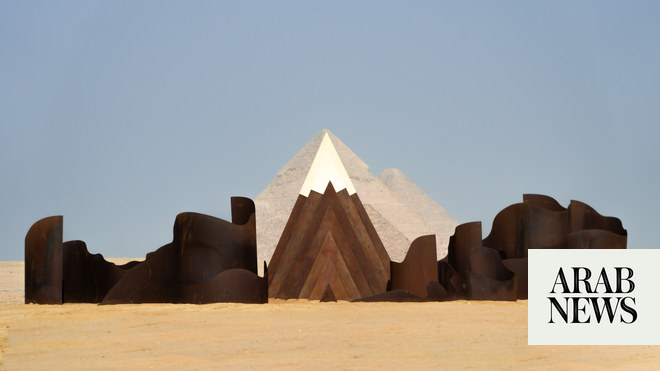
The Emirati conceptual artist discusses hair — the inspiration behind her six-meter-high installation at Abu Dhabi Art in November.
For the latest updates, follow us on Instagram @arabnews.lifestyle
I started collecting and creating with hair two or three years ago after seeing a necklace Mona Hatoum made from her hair. I was really taken by that.
I would place the hair on paper and move it around with my brush, applying a medium that functions as glue. I (thought about) a lot of habitual practices, like my grandmother picking rice, that were meant to be time-consuming and slow me down.
I arrived at this place where I was thinking: “What does it mean for the hair to extend through force and then retract in water to become the form that it remembers itself as?” It made me think how hair has the capacity to memorize, to hold form.
With “Tasreeha,” I’m working with the façade. It’s multilayered on the inside but I’m only braiding the outside. It speaks to a lot of things: How we function as a society — always beautifying the outside and not really working on the inside. It’s all about what people say and how we present ourselves.
I knew it was going to be super-laborious and exhausting – there was a lot of weight to deal with. I wanted to endure that — the ritual that exists within that practice.
During lockdown I was questioning things: I’m teaching from home, and I have a Zoom meeting and I have to put my headscarf on. That doesn’t make sense: I’m in my intimate space. What does it mean to be covered inside versus outside? It was something that I always wondered about.
The idea of covering and uncovering was a departure point for thinking of hair as a site of living. It starts to talk about taboos, social constructs inherent to religious or cultural ideas — dos and don’ts that we grew up with.
I think women in our culture carry a lot of cultural weight. We’re successful, we stand out in what we do, but we also compromise a lot. There’s a lot of underlying stress that comes with proving yourself.
I’m not saying I’m oppressed or anything. I’m just speaking through this visual language. Someone told me: “You were speaking for all us, not just yourself.” I was so touched by that. People are relating to it and I think that each female will relate to it differently.
With “Tasreeha,” I’m working with the façade. It’s multilayered on the inside but I’m only braiding the outside. It speaks to a lot of things: How we function as a society — always beautifying the outside and not really working on the inside. It’s all about what people say and how we present ourselves.
I knew it was going to be super-laborious and exhausting – there was a lot of weight to deal with. I wanted to endure that — the ritual that exists within that practice.
During lockdown I was questioning things: I’m teaching from home, and I have a Zoom meeting and I have to put my headscarf on. That doesn’t make sense: I’m in my intimate space. What does it mean to be covered inside versus outside? It was something that I always wondered about.
The idea of covering and uncovering was a departure point for thinking of hair as a site of living. It starts to talk about taboos, social constructs inherent to religious or cultural ideas — dos and don’ts that we grew up with.
I think women in our culture carry a lot of cultural weight. We’re successful, we stand out in what we do, but we also compromise a lot. There’s a lot of underlying stress that comes with proving yourself.
I’m not saying I’m oppressed or anything. I’m just speaking through this visual language. Someone told me: “You were speaking for all us, not just yourself.” I was so touched by that. People are relating to it and I think that each female will relate to it differently.












